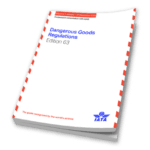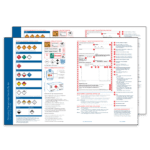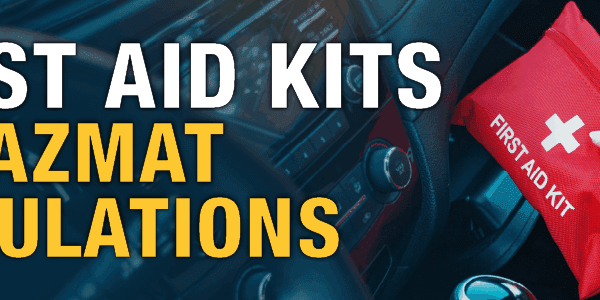
The past two years have created many changes in how we work. One change I’ve noticed is that, since most of my work is done at home these days, I don’t have access to the ICC reference library. While many more reference works are available online these days compared to when I started, some essential documents, such as the International Air Transport Association (IATA) Dangerous Goods Regulations manual for transport by air, are not. Shipping me new versions, or having me come in to the office to pick up new ones, isn’t good for physical distancing, so I’ve worked the past two years with the electronic version instead. Should you make the change from hard copy to digital? Here are some things I found as I worked with the new format.
Cost – Point to the electronic version
The electronic version will cost a few dollars less than the hard copy. Not a major difference, but enough to be worthwhile. Also, you won’t have to pay to have it shipped to you. Instead, you will be provided with a download code and instructions for installing it.
If you’re trying to be ecologically conscious, remember that the hard copy is currently about 1200 pages. And if you ship by air, you should have a current version for the year. Over a few years, going electronic will save a good number of trees.
Functionality – Lots of points for the electronic version
One of the strengths of the IATA Dangerous Goods Regulations has always been its relative ease of use. At least, ease compared to many other regulations! It’s well organized, and information is usually easy to find. To make things even easier, there’s a handy index at the back. So, what could be easier than just picking up a book and starting to read?
Well, the electronic version can take a little while to get used to. When you open it for the first time, you’ll not see a simple table of contents. Instead, there will be several headings – Home, DGR Manual, Identification, Packing Instructions, DGR Search, Identification Report, and Toolbox. But if you explore a little, you’ll find some wonderfully powerful tools.
The Heading “DGR Manual” is essentially the Table of Contents. You can go to any of the Sections or Appendixes and to the main subsections to read the full original text of the Dangerous Goods Regulations. But two of the most used parts have been broken out – “Identification” and “Packing Instructions” have their own heading, so you won’t need to scroll through the contents to find them. It also has an Index (similar to the one in the hard copy) and a tab where you can access all the sections that changed for that edition. As an added bonus, if IATA issues an addendum, you can download it, and it will install into your version for instant updates.
“Identification” has been made a powerful tool, with the ability to order the table by each column or search for various parts of the description. Want to see all the shipping descriptions available for infectious substances? Just type “6.2” into the “class” heading, and up they come. Want to find all the shipping names that include the word “flammable” and can use Packing Group III? Just type “flammable” into, you guessed it, the shipping name column, then “III” into the packing group column. You can sort numerically or alphabetically, in normal or reverse order.
Then, once you’ve found the entry you want, it will be extensively hyperlinked. If you want to check the packing instructions or special provisions, you don’t have to leave the table – just click, and you’ll be taken to the section you want. It can make a tedious slog through the tables almost instantaneous.
“DGR Search” is, as you might expect, a full-word search function for the whole book. It may seem redundant since we have the Index, but this is a more powerful function that can look for any word, even parts of words, while the Index lists major topics only.
Once you’ve found your substance on the “Identification” table, you might sigh that you’ll have to pull all the information together for a report. No problem – the “Identification Report” allows you to do this with a few clicks. Just enter the UN number or shipping name, and you’ll get a compact report with the full shipping description, hazard label illustration, special provisions, and even the packing instructions all on one page. A very useful addition!
The last tab is “Toolbox.” At first, I hadn’t paid this much attention, but it has some very useful tools here. One of the best is a fillable PDF for creating a Shipper’s Declaration, which could be printed from the screen (you’ll still need a color printer, though). You can also design an Excepted Quantity mark for printing. In addition, you have fillable checklists for reviewing your shipment. There’s a printable “Quick Reference Card” for a quick reminder when away from the computer about the basics of dangerous goods by air, and even a link to IATA’s dangerous goods department so you can quickly drop them a line if you have any questions or concerns.
Altogether, IATA has done an excellent job extending the capabilities of the electronic version far beyond what can be done with the paper format.
Format Options – E-version wins again!
Of course, it’s not a fair fight – the paper version of the regulations gives you a choice of perfect-bound or spiral-bound, but not much else. The electronic version is good for Windows, Mac, iOS, and Windows mobile devices.
The one downside is that a book can be shared by everyone in the office. The base price for the electronic version is for a single-user license, although there are apparently networked options (I’ve only used the single-user version). There might be a price benefit to the paper version if you’ve got a large group of people, each of whom might have to check the manual occasionally.
Conclusion
So should you go electronic? My advice is that if you’re a remote or single user, there’s no reason not to. You get the same information in a format that can be searched and organized much more powerfully than any book can provide. The automatic updates for addendums is a great feature as well. And if you need to travel, well, let’s face it, manuals are heavy. The electronic version is a lot easier on my back!
On the other hand, if you’ve been able to open your work areas fully after the pandemic, and many people may need to access the regulations from time to time, the paper version may still be your most cost-effective way to go.
If you need either version of the IATA DGR, contact The Compliance Center, 1-888-442-9628 (U.S.) or 1-888-977-4834 (Canada). We can get you up and running with air shipments as quickly as possible at the right price.
Stay up to date and sign up for our newsletter!
We have all the products, services and training you need to ensure your staff is properly trained and informed.
 IATA Publications |
 Shipping by Air Training Courses |
 Shipping by Air Posters & Charts |






 ICC USA
ICC USA ICC Canada
ICC Canada